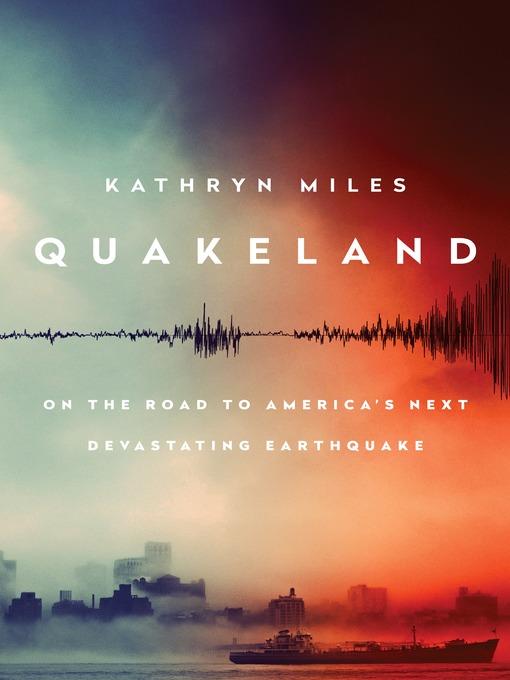
Quakeland
On the Road to America's Next Devastating Earthquake
کتاب های مرتبط
- اطلاعات
- نقد و بررسی
- دیدگاه کاربران
نقد و بررسی

June 26, 2017
Science journalist Miles (Superstorm) details a potential new source of anxiety for Americans: seismicity. She cites the unpredictable nature of earthquakes and the fact that there are over 2,100 known faults on the U.S. geological map. Sketching grim scenarios of potential disaster, Miles suggests that the American infrastructure is wholly unprepared to withstand the next rupture. She begins with the Hebgen Lake, Mont., quake of 1959, which caused $11 million in damages ($70 million today), to illustrate the suddenness of tremors and their devastating ripple effects. Miles then takes readers on a cross-country tour of seismic hot spots. She meets with colorful engineers and geologists to peer below the Earth’s surface and gauge the pressure being imposed on it internally as well as externally by human constructions such as the Hoover Dam, Mississippi River levees, and the Steinway Tunnel (which connects Manhattan and Queens). Miles also confronts hydraulic fracturing in Oklahoma, where increasingly powerful earthquakes have spread over a larger territory, making it the most seismically active of the Lower 48 states. Yet despite myriad technological advances, predicting the next earthquake remains nearly impossible. Mixing geological primer with apocalyptic warning, Miles makes clear “how fragile—and volatile—the ground beneath our feet really is.” Agent: Wendy Strothman, Strothman Agency.

June 15, 2017
A wide-ranging account of earthquakes, the least understood of natural disasters, with vivid stories of the havoc they create and a warning about what will someday happen in the United States.Journalist Miles (Superstorm: Nine Days Inside Hurricane Sandy, 2014), a writer-in-residence at Green Mountain College, took an extended road trip across the country to report on the myriad risks of seismic disasters. Along the way, she picked the brains of cooperative engineers and scientists and chatted with miners and emergency managers, people with whom she established immediate rapport. A daring investigator, she descended into deep mines, gained entry to nuclear power plants (some of which are built on fault lines), and ventured into the interiors of high dams, observing, asking questions, and conjuring some scary conclusions--e.g., earthquakes happen, our infrastructure is in a sorry state, and many localities have no seismic codes to regulate construction. Miles lightens this grim picture with her conversational writing style. She shares her thoughts, emotions, and experiences, even the most commonplace ones, effectively taking readers along on her cross-country wanderings. In the Midwest, where fracking is common and quakes are frequent, her conversations with people waiting for the big one while living regularly with toppled chimneys and broken china are spot-on. While she describes past earthquakes in other countries, the author focuses mostly on the prospects of a major quake in this country and what can be done to prepare for it. After looking at struggles to develop technology that can predict earthquakes, Miles reports on the success of early warning systems, which can make a major difference in survival rates, and she sets forth a scenario in which a few seconds of warning and some preparedness measures can ameliorate the devastation of a major quake. Occasionally long-winded but readable and engaging--not to mention eye-opening, as the author delivers a firm warning to policymakers as well as individual citizens.
COPYRIGHT(2017) Kirkus Reviews, ALL RIGHTS RESERVED.

September 15, 2017
Seismic science is popularly focused on California and the region's San Andreas fault, but new research is showing that many faults (fractured rock as a result of movement) are not confined to the West Coast; in fact, they are quite numerous throughout the United States, including in places that were once considered fault-free such as New York and Oklahoma. As journalist Miles argues, this means that many of these "earthquake-free" areas, which were built up without any seismic codes, are not as well prepared should the Big One hit their region. By traveling to such places and focusing on the recent science, Miles takes a hard look at seismology's new findings and applications. In addition, not only is there current research on naturally occurring quakes, there is evidence of a rise in human-induced earthquakes from activities such as reservoir building, mining, and even fracking. Miles's fascinating volume is an eye-opener, demonstrating how this new knowledge impacts long-held beliefs about earthquakes, their occurrences, and their behavior. VERDICT A cautionary look at how changes to the Earth, both natural and human-made, are transforming the scientific field as well as what those changes might hold for cities and individuals. A relevant topic that any reader will find compelling.--Laura Hiatt, Fort Collins, CO
Copyright 2017 Library Journal, LLC Used with permission.

July 1, 2017
Frightful articles about earthquakes, including The Earthquake That Will Devastate the Pacific in the New Yorker, have recently appeared, but award-winning science writer Miles (Superstorm, 2014) is not interested in fear tactics. In this engrossing, timely, thoroughly researched account, she crisscrosses America, meeting with dozens of scientists and immersing herself in the nation's turbulent geologic history. She provides vital background information and personal stories about Yellowstone, Salt Lake City, New York, and Memphis while peering into reams of research on dam stability, airport design, the Mississippi River, and so much more. (One interesting fact: FedEx's main terminal is on the New Madrid Fault Line.) Miles also brings readers up to speed on the earthquakes we are causing by fracking and the political forces engaged in denying that problem. (Another interesting fact: prior to 2014, there were 24 earthquakes annually in the Midwest; that year, there were 688.) Smart, compelling, and fearless in its embrace of science, Quakeland is full of fascinating people imparting big truths. We ignore their knowledge at our own peril.(Reprinted with permission of Booklist, copyright 2017, American Library Association.)

























دیدگاه کاربران